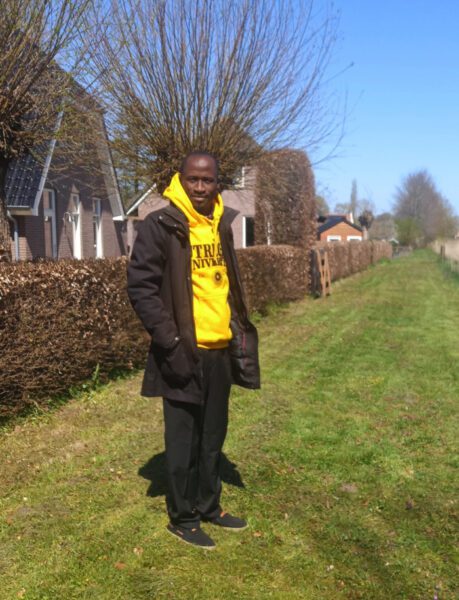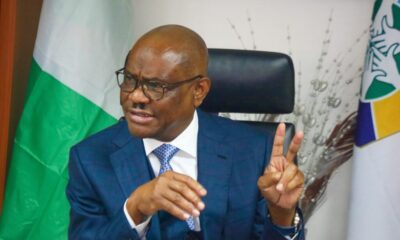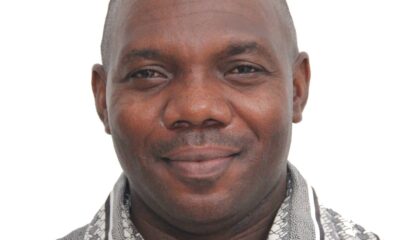Forgotten Dairies
My Trip To Netherlands, A Travelogue -By Ismail Misbahu
In another corner, we were shown a building (which I could not have been able to capture), a Church in fact, where, as we were told, the Roman Catholic usually hide and pray because there were threats from the Protestants to seize their worshipping, something like what happened to the Muslims in Makkah at the early age of Islam.

“God created the earth, but the Dutch created the Netherlands” ~The Dutch ~
The Netherlands hugs the North Sea and shares borders with Germany and Belgium, making it a great jumping off point for exploring Western Europe. Trains and buses are available for anyone who bothers not travel by plane to countries like France, Germany, United Kingdom, Canada, Belgium etcetera. On waterways are ships bringing in different people from Kiev, Venice, China, and Canada for tours on the Netherland’s countryside. Tours on the NL’s lowland areas is an amazing exploration of natural beauty and great memories of historic towns and cities. Although the tour was not the initial purpose of my trip, it provided great insights on major historical events known to have shaped the history of Europe centuries ago.
The saying “God created the earth but the Dutch created the Netherlands”, explains how the latter stood up to conquer nature ⸺ ‘man and nature relationship’ a historian would say. This relationship explains how the Dutch becomes products of their environment. A greater part of the land, almost a half of it is below sea level and according to the documentary we watched at the touring site of Kinderdijk, some kilometers away from our instructor’s beautiful district, Dr. Simon Polinder, dikes of considerable sizes helped shield the low flat land from invasion by the North Sea. Without the existing dikes more than half of the country would be flooded daily. The Dutch have made many lakes and turn parts of the sea dried, creating polders flowing through it, hence the saying above.
At the Kinderdijk, we saw how water is pumped from the lower level to the highest flat by various windmills. This continues until the water is drained from the areas to the nearby river, making the land less exposed to flood or swamps. About 19 of such windmills are present at Kinderdijk, and on boat, we had the privilege to reach into the sites of such windmills and shine our eyes. The insides of the mills are extremely Dutch cultured, material remains unbelievable to fathom. One must see how the Dutch were so hardworking and efficient. I could figure out from the inside a wife’s groom in, a bedroom and a kid’s cabinet, wardrobe, kitchen, sewing machines, farm tools including some fishing rods and nets etcetera. [Photo removed].
Inside the souvenirs
Not only are windmills in the Kinderdijk but also are the remaining wheels of the steam engine and the graphic art designs of the windmills themselves. This must remind someone of the role of the Netherlands as the champion of water management during the industrial age of Europe. Although this development came to it later, at about 1850, the documentary seemed to have suggested that the country’s hydro-tech and power prominence might not necessarily be the result of industrial revolution, it must have begun much earlier. Not only was there a glimpse of these historical events but equally important were also the souvenirs including a wooden boot which, as impressed by the story in the documentary, must have been used by farmers at the early age, and perhaps by people in charge of the river delta. This reminds me of the great delta we saw in Wapenveld, another beautiful district of our teacher and trainer, Dr. Eva Krah, a healthy village with beautiful tracts of lush agriculture. [Photo removed].
At Wapenveld
[Photo removed]The delta in this touring site is a storage of various sediments forming at the cross triangle of several distributaries and water channels, hence the delta. History has indeed shown how deltas have been significant to the development of human civilization. Historians believe that it was in the fertile river delta in Mesopotamia that humans first learned to harness the power of water for irrigation in agriculture. So were the ‘creators’ of the Netherlands who also harnessed and transformed their lands into a very fertile, green, and lush agricultural expanse. Along the great Mesopotamia for instance, emerged civilizations such as those of Iraq, Syria, Lebanon, Palestine, Jordan, Israel, Egypt, Kuwait, Turkey, and Iran. The stability brought about by agriculture allowed culture to flourish and little wonder farming and herding of cattle become the most important issues of national concern in the Netherlands. On the contrary, they remain the most topical security challenge to the country just as to the rest of other parts of the World.
The glaciers
The reason is clear why greater part of the Netherlands is under water. ‘The Little Ice Age’ brought colder winters to parts of Europe and North America including the Netherlands. Farms and villages were destroyed by encroaching glaciers during the mid-17th century. Canals and rivers which have been the distinguishing environmental features of the Netherlands were frequently frozen deeply enough to support ice skating and winter festivals. We visited the sites some few kilometers away from Wapenveld where the glaciers were said to have been deterred by human blockade.
The U.N.-funded panels of scientists said global warming is responsible for the melting ice, that heat-trapping gases from burning fossil fuels are nudging up temperatures. Scientists dismiss global warming, arguing instead that natural climate fluctuations are responsible. That glaciers are proposedly caused by cyclical lows in solar radiation, heightened volcanic activity, changes in the ocean circulation, variations in Earth’s orbit and axial tilt (orbital forcing), inherent variability in global climate, and decreases in the human population.
The reminders of Reformation
Religion has been one of the most important historical antecedents shaping the believe and value system of the people of the Netherlands. Yet the opposite is the case where in Nigeria, people become religious without adhering to the religion. Netherlands is among the countries with high religious tolerance. The interview I had (as part of our ethnographic field exercise) with one of the elites in Wapenveld hinted at saying that politics has become a threat to democracy and as well, continued to challenge Freedom of Religion and Belief (FORB) especially since the Tram attack in 2019. To many in the Netherlands, minority Muslims from Morocco and Turkey are the threats to religious freedom and democracy. However, some academic professors including University students might have held different opinion, only to believe that this is rather a perceptible phenomenon not necessarily that there has always been a connection between migration, Islam and terrorism.
The history of the Church and the reminders of the 16th century Reformation are expressed in various forms of arts, paintings and statues across the city of Utrecht and virtually all over the Netherlands. Inside the Utrecht University campus is a large hall hosting different worshipping corners. On the doors up the stairs are paintings of the great protestants: Martin Luther, John Calvin and others. While Germans hold on to Lutheranism, most Netherlanders are Orthodox Calvinists with others believing in Anabaptism. In the village of Wapenveld, we saw Orthodox Christian Churches and we were told how Christians in the village dress decently, different from the half-naked dresses of the many you could see in Nigeria!
On our Freewalking Tour, the Hague, I was shown a place at the backyard of the King’s palace where gun powder was stored and of course, the reason why the soil appears different from the other ones in the city; ash and sandy. We were told that the sea and the storing of the gun powder were strategic to the protection of the King during the Protestant wars. In other words, this development also impressed on the impact of industrial revolution on the part of the Netherlands. [Photo removed].
A stone-throw from the King’s palace was a tall building decorated in a style like that of King Luis XIV. We were told that the architect was asked to replicate the Luis’ style and there’s of course a sketchy mark to impress the architect’s mastery of art. This was a place where, as we were told, leading members of Roman Catholic and Protestants usually gathered to set the armistice of peace. In one of such occasions, a ‘Roman Catholic’, of course the Dutch would say, shot one of the Protestants to death, marking an end to the armistice of peace between the two Christian followings leading to dismemberment and subsequent emergence of nationalities such as the Rome (Italy), Spain and the Netherlands. [Photo removed].
Few steps into the entrance of the King’s palace, was a statue and a building, now hosting the body structure of the State’s judiciary. The statue was a man (I could not remember his name) who had the courage to unite various European cities under the King of Netherlands and the court and the judicial bodies adjacent to it were used to enact and pass laws to the cities under control. When I asked, ‘did he subdue them’? Ronald, our walking eye, insisted it was an effort to ‘unite’ them’ and of course, he said, this started a long time ago when some of these cities fell under the power of the Dutch East Indian Trade (the VoC) up until the Renaissance. Unfortunately I couldn’t have been able to comb the VoC archive.
[Photo removed].In another corner, we were shown a building (which I could not have been able to capture), a Church in fact, where, as we were told, the Roman Catholic usually hid and prayed because there were threats from the Protestants to seize their worshipping, something like what happened to the Muslims in Makkah at the early age of Islam.
We have seen a lot that cannot be captured within this very limited space. What thrilled my attention and of course, caught me into feeling sorry to myself and to my country is the level of security of lives and property. Our instructors drove us to an open parking space, left their cars and looked for trains/buses for distant kilometers without worries. The same I observed in Wapenveld where most rooms allocated to guests often left opened, no one seems to bother going out even as the doors to the rooms remained unlocked. Glass decorated buildings are a feature not only of extensive architectural designs but to me, also a justification for a secured and safe environment. Not for a second could one nod his head to admit there has been such an impression in Nigeria. Corruption is a culture one must find almost impossible to the socio-economic settings of the Netherlands, indeed most parts of Europe but Nigeria. The moment you begin to reason, the more you feel abused! What? Abused and embarrassed I mean!
Then back home
At Schiphol Airport, Amsterdam, I was thinking differently and unfortunately no clues other than the Black Mass by John Gray, a book gifted to me by my Oga. It is a book on how politics interacts with religion popular among social scientists and students at the London School of Economics. While many passengers in the plane were busy watching films, I had the good time for which I could have some idea about Gray’s ‘Apocalyptic Religion and the Death of Utopia’. Having noticed that we arrived at the Charles De Gaulle Airport Paris, where we got boarded to our connecting plane, I switched to watching a film, ‘Profilage’ until the first 11/2 hours was exhausted. I then switched to following our plane’s routes until we arrived at N’Dajamina, (Chad). It was dark and cloudy, and everyone became weak. While waiting to take off for Abuja, sleeping did the usual thing: snatching the eyes! Wagging on the sky for landing woke me up; we must have remained on the air for almost 30 minutes waiting for the underground aircrafts to set up. ‘Welcome to Abuja’, my MTN and Airtel reminded me.
Dedication to Professor Beatrice de Geraaf.
Good day!









